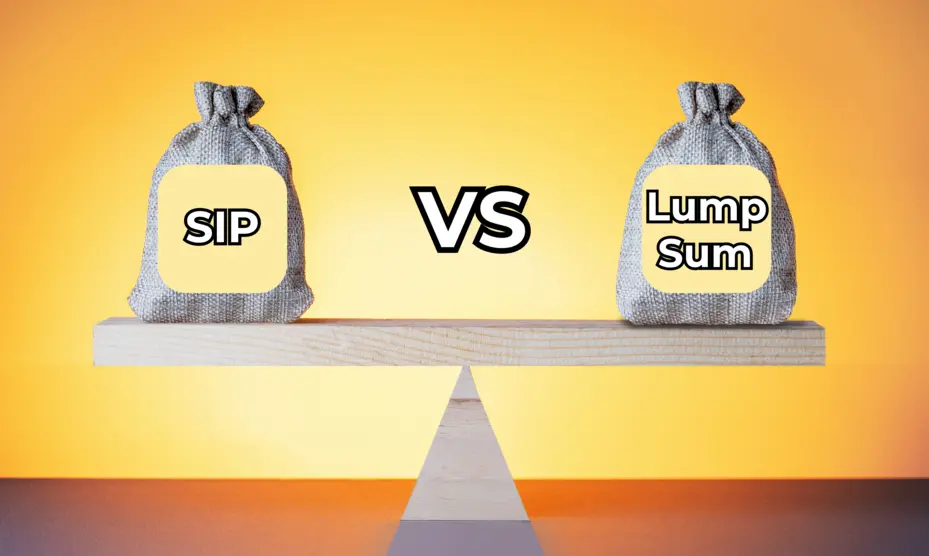
“The best investment strategy is not about catching market highs — it’s about staying consistent, informed, and patient.”
Investing plays a pivotal role in building long-term financial security. Whether you’re planning for retirement, a child’s education, or wealth creation, selecting the right investment strategy is crucial. Among the most popular investment methods in mutual funds are Systematic Investment Plans (SIP) and Lumpsum investments. But which one is better for your financial journey?
In this blog, we dive deep into the pros, cons, scenarios, and real-world applications of both strategies to help you make an informed decision that aligns with your goals.
What is a SIP (Systematic Investment Plan)?
A SIP is a disciplined investment approach where a fixed amount is invested regularly (typically monthly) into a mutual fund. This method allows you to accumulate wealth gradually and benefit from rupee cost averaging and compounding. It encourages financial discipline by making investing a habit, regardless of market conditions. Over time, even small contributions can grow into a substantial corpus, making SIPs ideal for long-term financial goals like retirement, education, or home buying.
Key Benefits of SIP
- Rupee Cost Averaging: Mitigates the effect of market volatility.
- Low Entry Point: Start with as little as ₹500/month.
- Compounding Effect: Long-term SIPs benefit significantly from compounding returns.
- Automatic Investment Habit: Builds financial discipline.
- Reduced Emotional Investing: Eliminates guesswork and timing stress.
Drawbacks of SIP
- Limited for Large Sums: Not ideal for one-time windfalls.
- Slow Capital Deployment: May underperform in fast-rising markets.
✨ Tip: SIPs are like a gym membership for your finances. Regular, consistent workouts (investments) build strong results over time.
What is Lumpsum Investment?
Lumpsum investing involves putting a large amount of money into an investment instrument at one go. This approach works best when the market conditions are favorable and the investor has a high-risk appetite. It is often preferred by those who receive bonuses, inheritances, or have idle funds to deploy. If timed well, a lumpsum investment can generate substantial returns in a shorter time frame compared to periodic investing.
Key Benefits of Lumpsum
- Maximized Returns in Bull Markets: Higher potential if the market rises post-investment.
- One-Time Effort: No need to manage monthly contributions.
- Good for Long-Term Goals: With proper timing, it can yield substantial results.
Drawbacks of Lumpsum
- Market Timing Risk: Investing at a market peak may result in short-term losses.
- Requires Financial Acumen: Understanding market trends is key.
- Not Ideal for All: Not everyone has access to large disposable capital.
SIP vs Lumpsum: Side-by-Side Comparison
| Criteria | SIP Investment | Lumpsum Investment |
|---|---|---|
| Investment Style | Small, recurring amounts | Large, one-time investment |
| Risk Level | Low to moderate (averaging out risk) | High (market timing sensitive) |
| Return Potential | Moderate and stable | High if market performs well |
| Ideal For | Salaried or budget-conscious individuals | Those with surplus funds |
| Market Dependency | Less (spread over time) | High (timing is critical) |
| Financial Discipline | Encouraged through routine | Requires pre-planning and monitoring |
When to Choose SIP?
Consider SIP if:
- You have a fixed monthly income (e.g., salaried employees).
- You are a beginner investor looking for structure and discipline.
- The market is volatile or uncertain.
- Your goals are long-term, like retirement or child’s education.
When to Choose Lumpsum?
Opt for Lumpsum if:
- You receive a bonus, inheritance, or windfall.
- The market is down and expected to rise.
- You have a higher risk tolerance and market experience.
- You are investing for short to mid-term high-growth opportunities.
Tax Implications: SIP vs Lumpsum
Both SIP and Lumpsum investments are subject to mutual fund taxation under Indian tax laws:
SIP Taxation
- Each SIP installment is considered a separate investment.
- LTCG (Long-Term Capital Gains) Tax: 10% if total gains exceed ₹1 lakh (after 1 year).
- STCG (Short-Term Capital Gains) Tax: 15% if sold before 1 year.
Lumpsum Taxation
- Gains are taxed based on holding period:
- < 1 year: 15% STCG Tax.
- ≥ 1 year: 10% LTCG Tax beyond ₹1 lakh.
Always consult a tax advisor or refer to the Income Tax Department Website for the latest rules.
Real-World Example
Scenario 1: Rahul starts a SIP of ₹1000/month in an equity mutual fund for 10 years. Due to rupee cost averaging and compounding, his investment grows steadily, even when markets dip occasionally.
Scenario 2: Priya receives ₹1 lakh as a bonus. She invests it as a lumpsum in a mutual fund during a market low. Over the next 5 years, the market performs well, significantly growing her investment.
Scenario 3: Amit, a freelancer with irregular income, tries investing ₹50,000 as a lumpsum during a market peak. Unfortunately, the market crashes shortly after. Without proper timing and diversification, his investment value drops, and it takes years to recover — highlighting the risk of poor market timing in lumpsum investing.
Scenario 4: Neha, a young professional, begins a SIP of ₹2,000 per month for her future home down payment. Despite market fluctuations, she continues investing consistently for 7 years. Her disciplined approach helps her accumulate a stable and growing corpus, proving how SIP can align with medium to long-term goals.
Both strategies worked, but suited different financial situations and risk levels.
Which Investment Strategy is Better?
There’s no one-size-fits-all answer. Here’s a quick checklist:
| Preference | Choose SIP | Choose Lumpsum |
| Regular Savings Habit | ✅ | |
| Surplus Money in Hand | ✅ | |
| Risk Tolerance | Low to Medium | Medium to High |
| Investment Timing Knowledge | Not Required | Required |
| Goal Horizon | Long-Term (5+ years) | Short or Long-Term |
In many cases, a hybrid approach (a combination of SIP and Lumpsum) works best to diversify risk and balance returns.
FAQs
1. Can I switch from SIP to Lumpsum?
Yes. You can pause your SIP and redirect funds into a lumpsum if needed. Ensure you understand the tax implications.
2. Which gives higher returns: SIP or Lumpsum?
Lumpsum may yield higher returns if the market performs well post-investment, but SIP offers more stability in volatile times.
3. What is the minimum SIP amount?
Most mutual funds allow you to start with as low as ₹500/month.
4. Is SIP completely risk-free?
No. SIP reduces risk through averaging but does not eliminate it entirely.
Final Thoughts
Choosing between SIP and Lumpsum depends on your income, financial discipline, market knowledge, and goals. SIP promotes regular savings and is ideal for new or risk-averse investors. Lumpsum works for experienced investors with capital in hand and an eye on market trends.
Ultimately, consistency and informed decision-making matter more than choosing the “perfect” strategy. Consider speaking to a SEBI-registered financial advisor to design a plan that suits you best.



